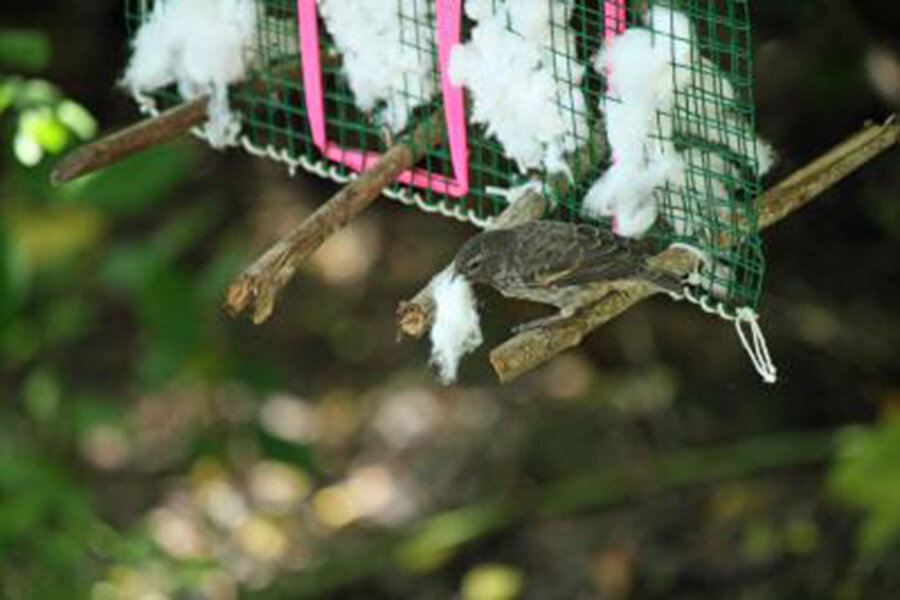How cotton balls are helping Darwin's finches fight parasites
Loading...
Though famous for their ability to adapt, Darwin's finches – the roughly fourteen species of bird found on Ecuador's Galápagos Islands – cannot always cope with every threat, at least not without some help from humans.
One of these threats, the nest fly Philornis downsi, is thought to be greatly contributing to the finches' decline.
The adult parasites (which look like houseflies) lay their eggs in the nests of the finches, whose varied bill shapes helped inspire Darwin's theory of evolution. Once the eggs hatch, the larvae feed on the nestlings by sucking their blood. Native to mainland South America, these parasites probably arrived at the island through boats and ships. This is why the birds probably do not have an effective defense mechanism against the "aliens," Sarah Knutie, a doctoral student at University of Utah who studies the finches told the Monitor
But Ms. Knutie has come up with a novel way to kill the parasite, which feeds on almost all land birds, including most species of Darwin's finches. She and her colleagues published their findings in a paper titled "Darwin’s finches combat introduced nest parasites with fumigated cotton" in the journal Current Biology.
By getting the finches to use cotton balls laced with permethrin (commonly used chemical in head-lice shampoo) in their nests, researchers say that the parasites can be significantly reduced.
"Self-fumigation is important because there currently are no other methods to control this parasite," said Knutie in a press release
Knutie says that the idea crossed her mind four years ago, when she was visiting the Galápagos Islands for her research. She noticed that the finches “were coming to my laundry line, grabbing frayed fibers from the line and taking it away, presumably back to their nests."
Knutie reasoned if the birds could be encouraged to carry fumigated cotton balls to their nests, the parasites could be controlled.
She and her team laid out some cotton balls in a dispenser. Some 30 cotton dispensers were used for four different species of finches inhabiting Galápagos' Santa Cruz Island. Some of the cotton balls were covered with insecticides and some were just soaked in plain water to be used as control. After the birds carried the pieces of cotton to their nests, researchers examined some 13 nests with treated cotton and nine with water-soaked cotton. "Nests with permethrin-treated cotton had significantly fewer P. downsi than control nests, and nests containing at least one gram of cotton were virtually parasite-free. Nests directly fumigated with permethrin had fewer parasites and fledged more offspring than nests treated with water," noted the researchers in their paper.
The insecticide, which uses just one percent of permethrin in water, kills only the parasites and doesn't harm the birds, Knutie says.
"It might kill a few other insects in the nest," said Dale Clayton, biology professor at the University of Utah and senior author of the study. "Permethrin is safe. No toxicologist is going to argue with that. The more interesting question is whether the flies will evolve resistance, as human head lice have done."
The method has the potential in controlling the two critically endangered species of finches – the barely 100 mangrove finches of the Isabela Island and about 1,620 of the medium tree finches on Floreana Island – which need immediate attention, say researchers.








